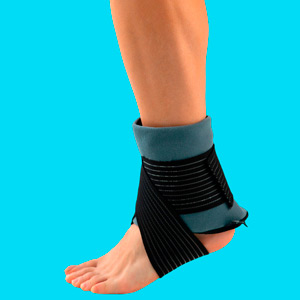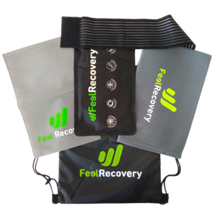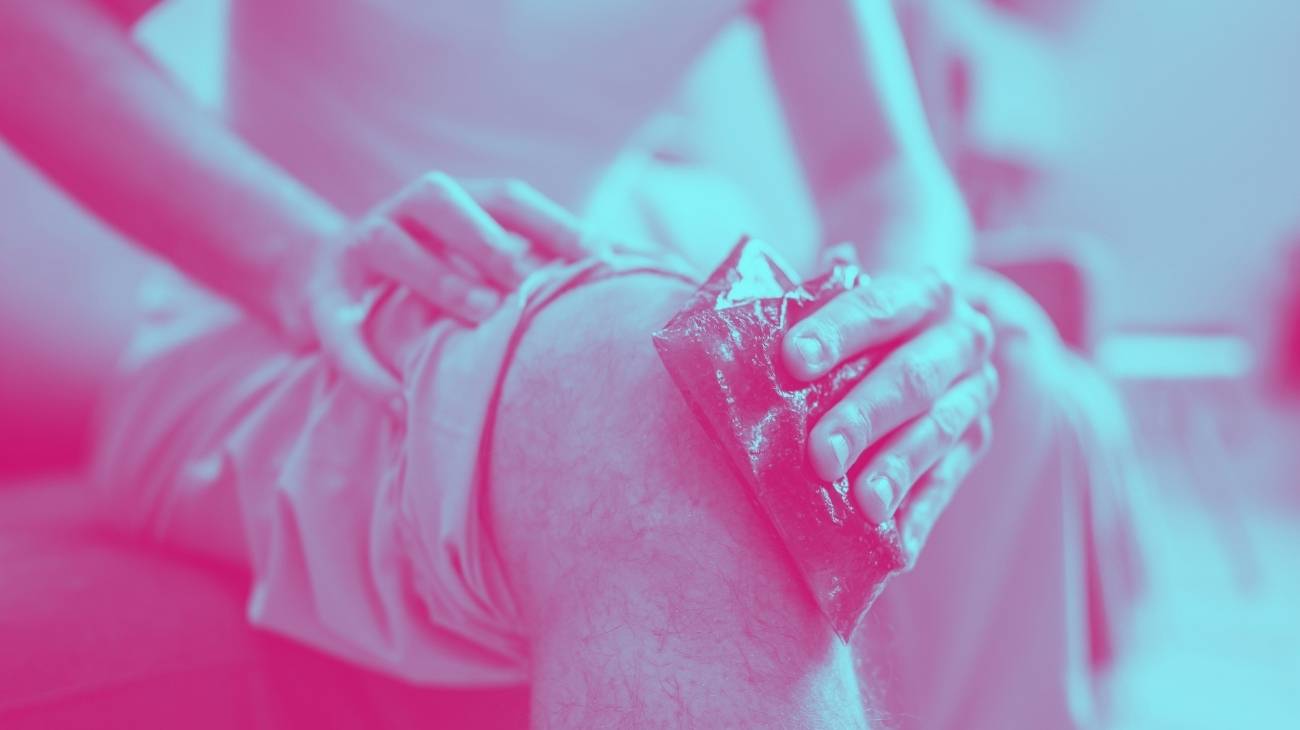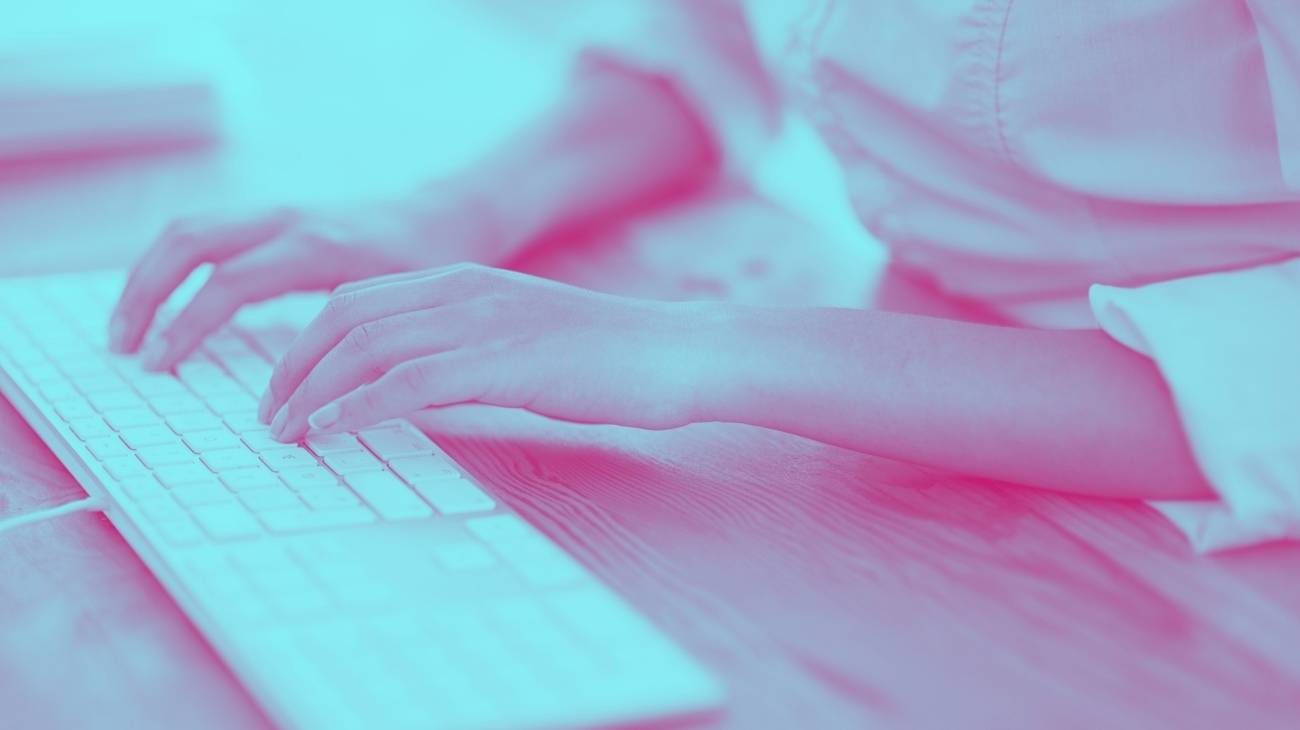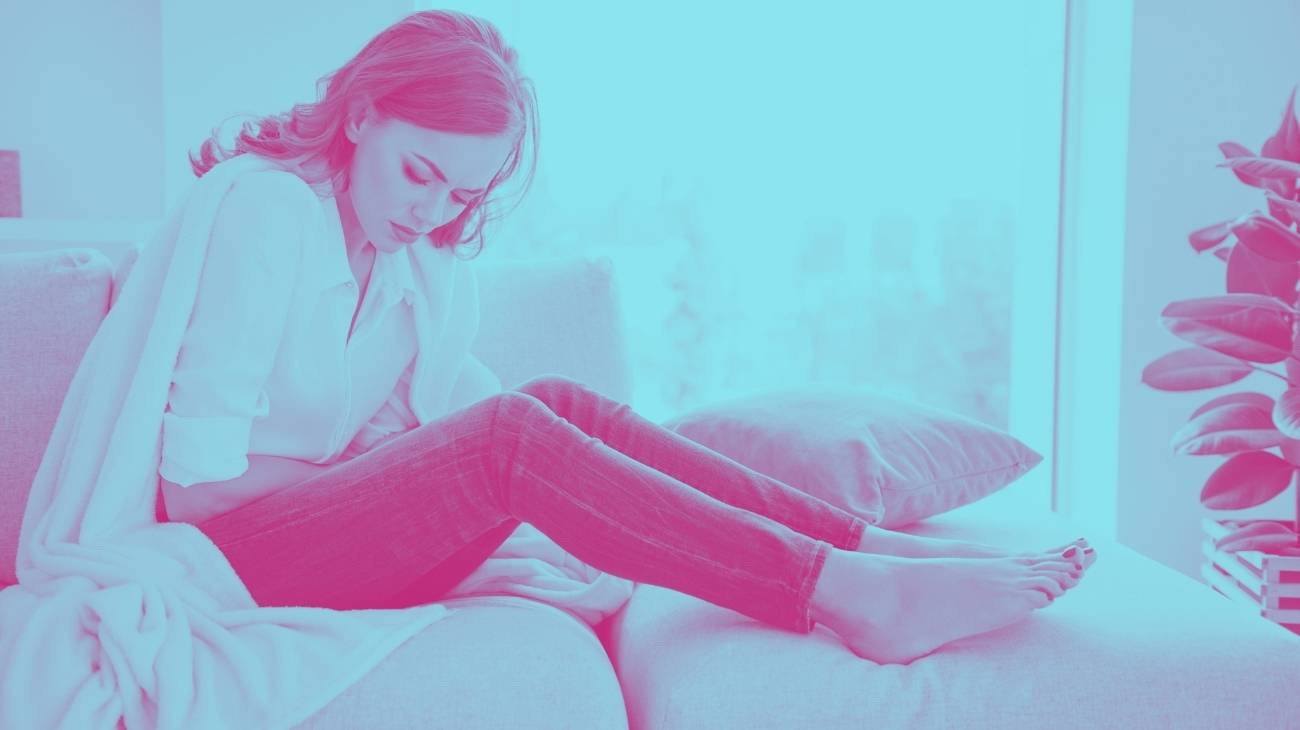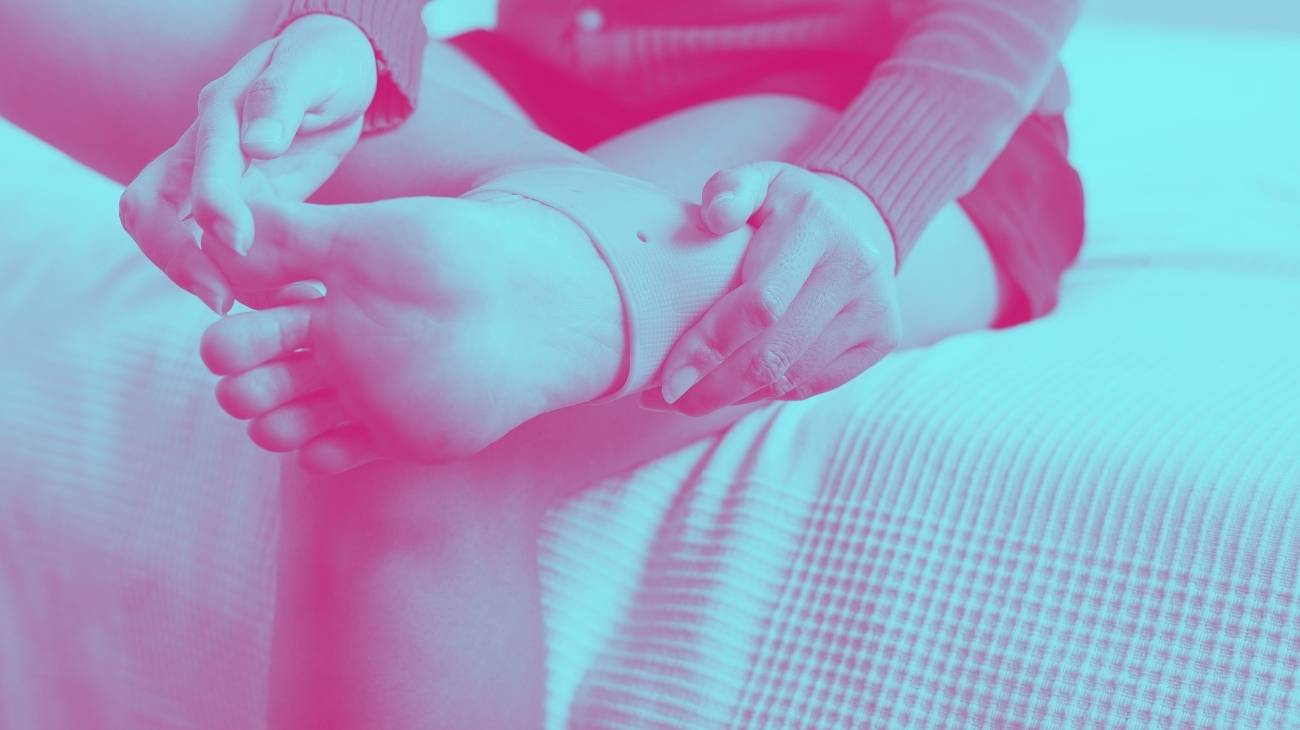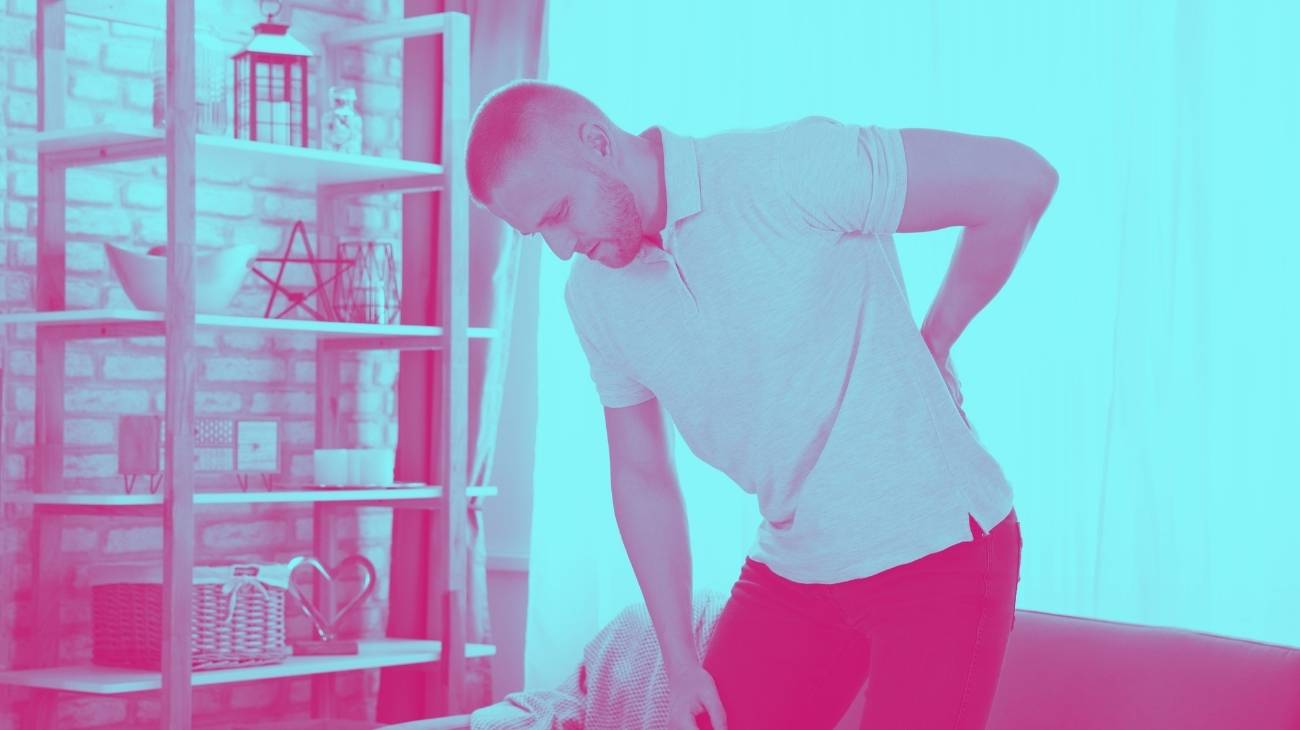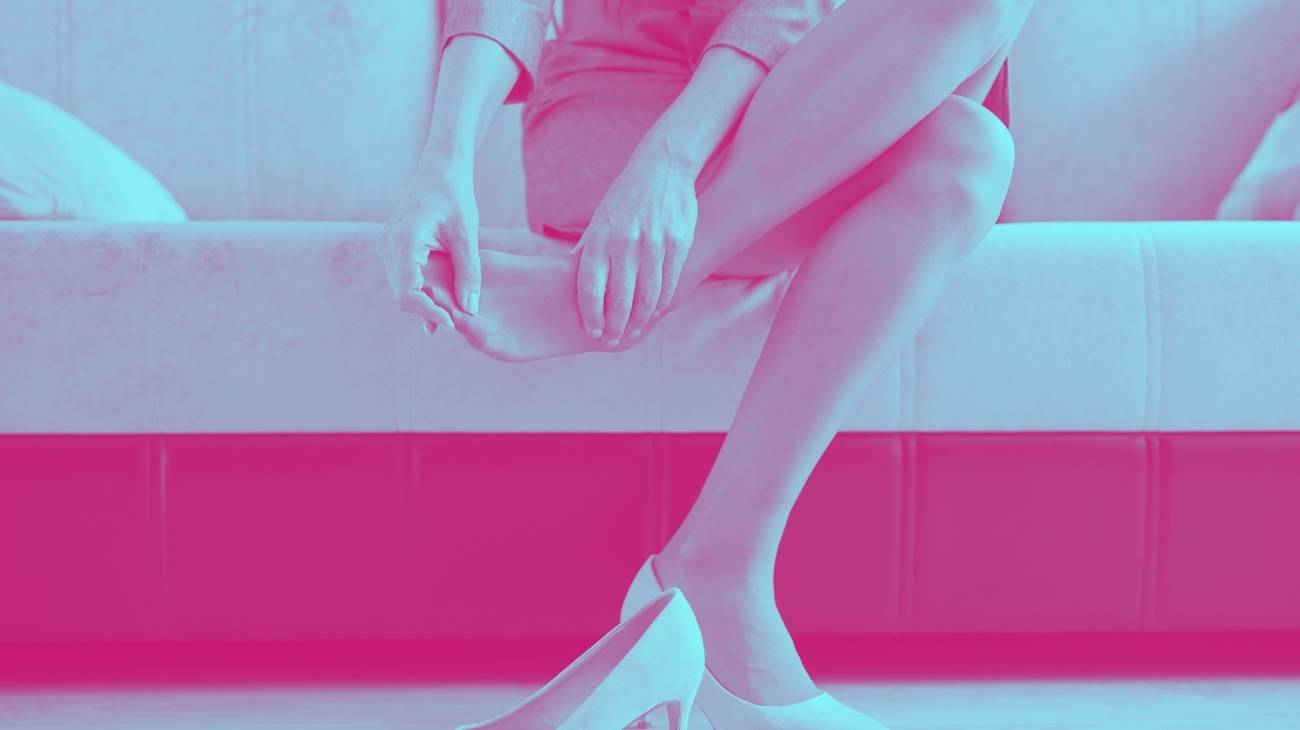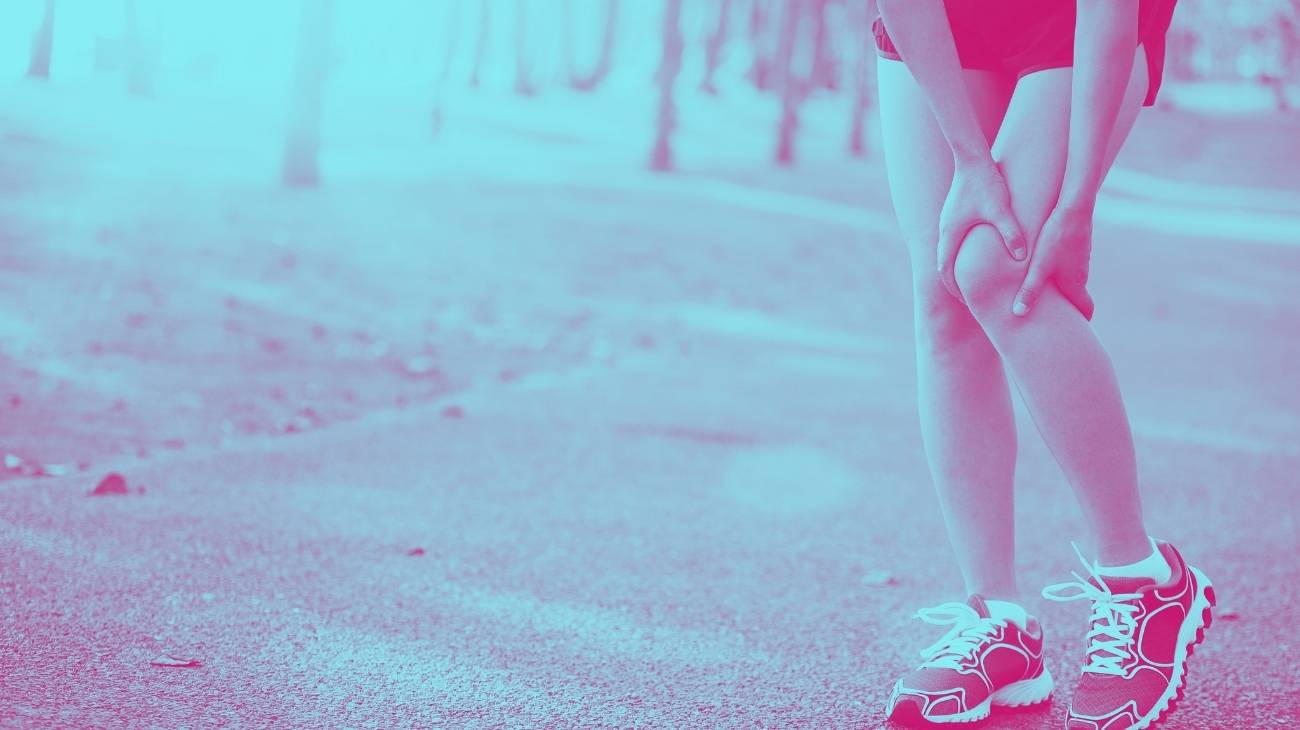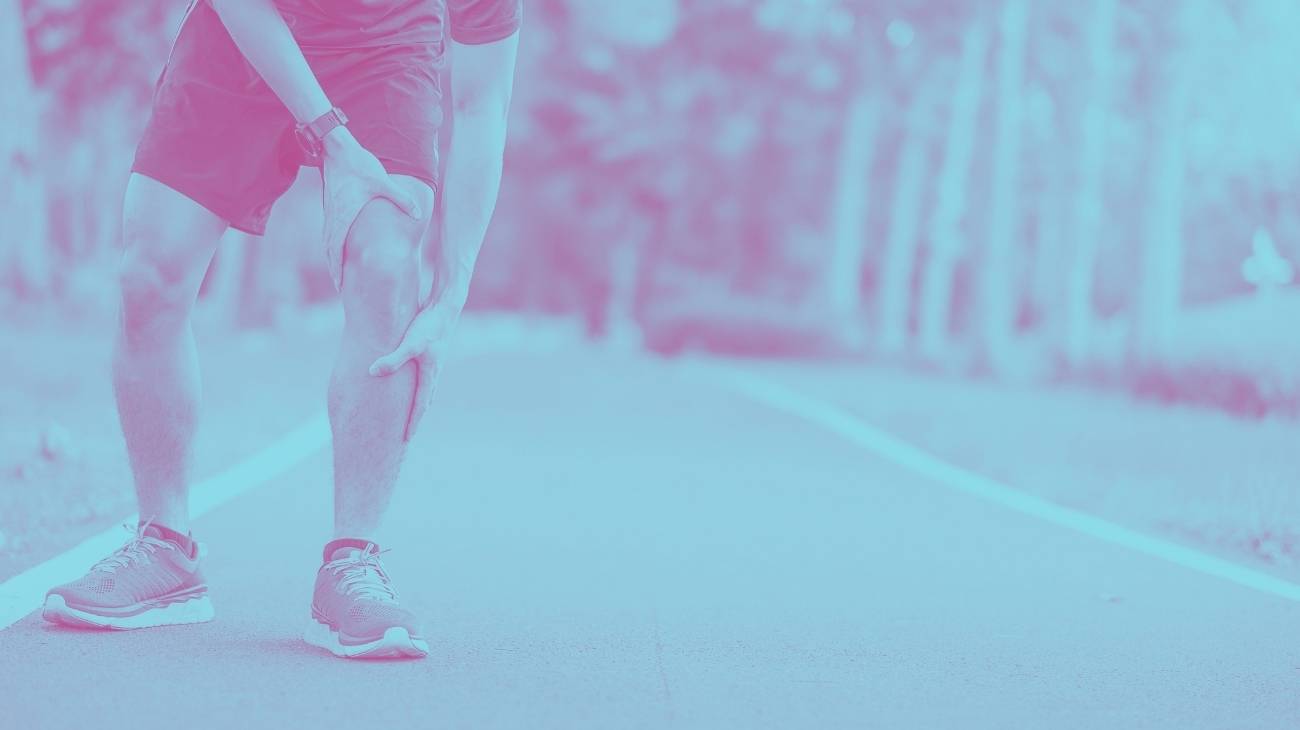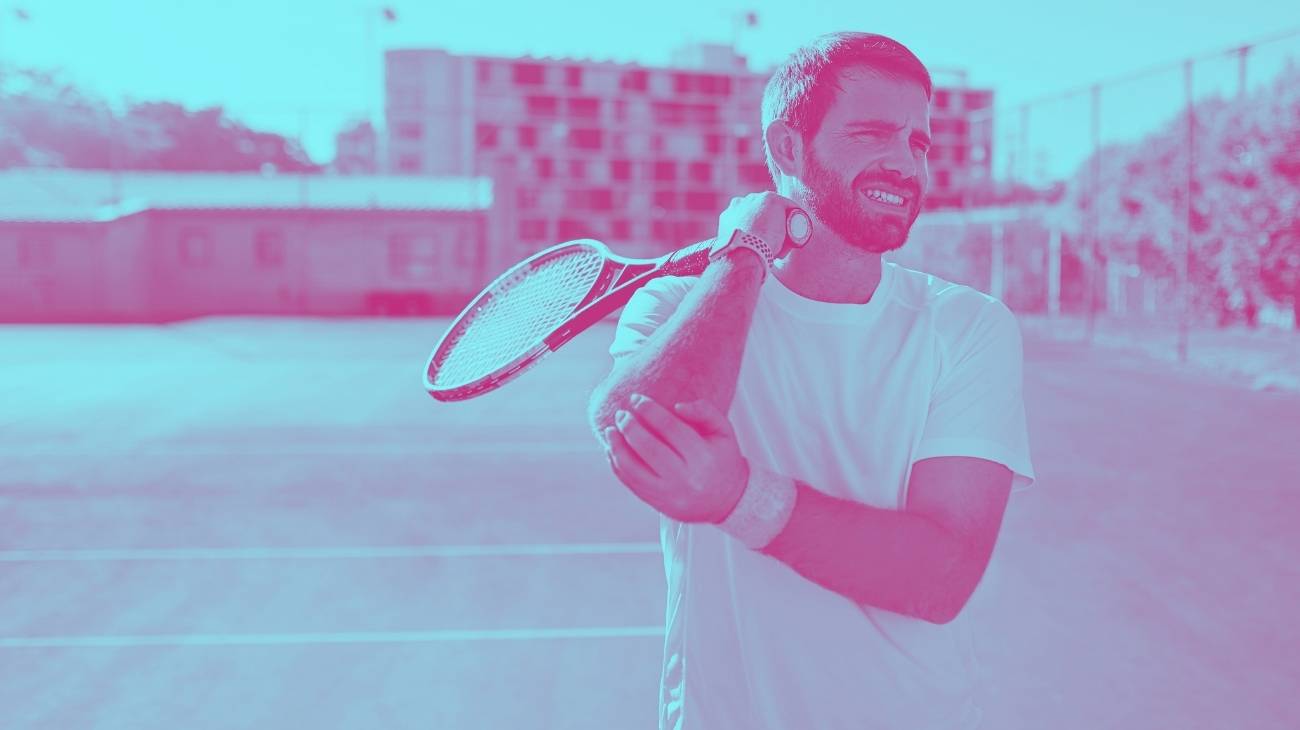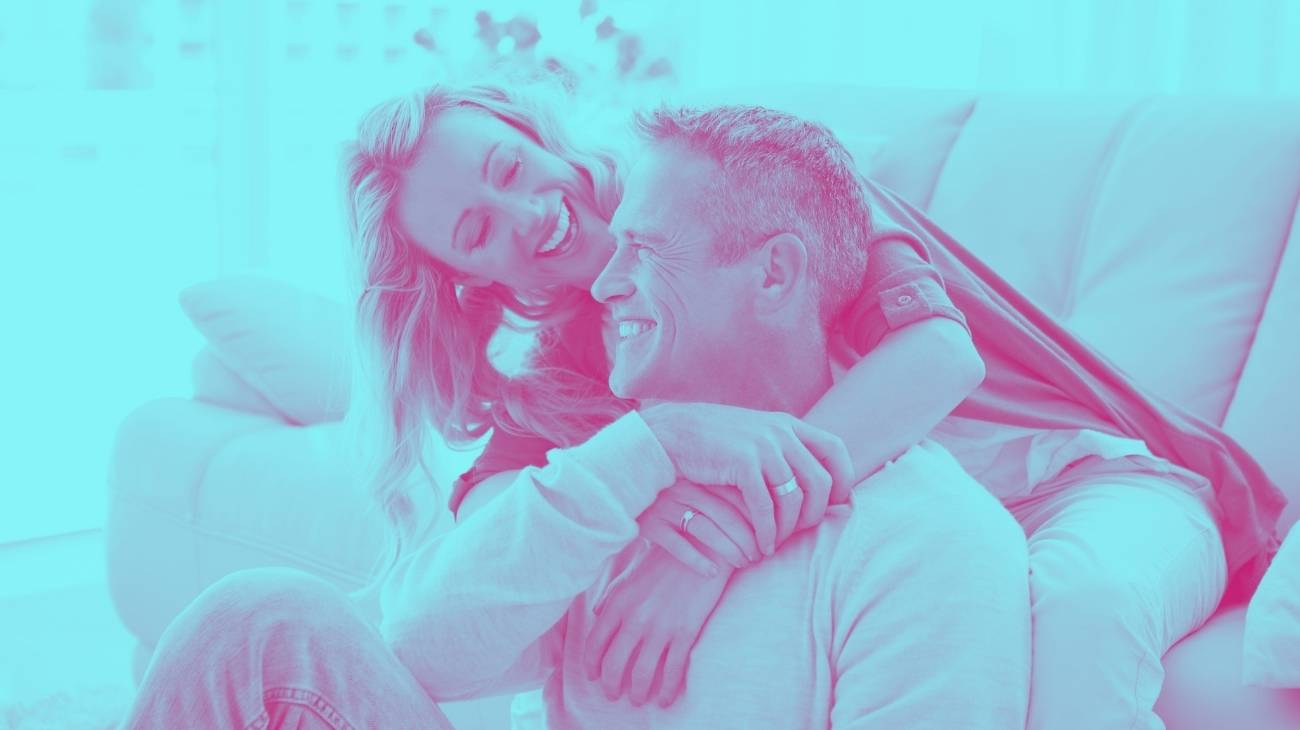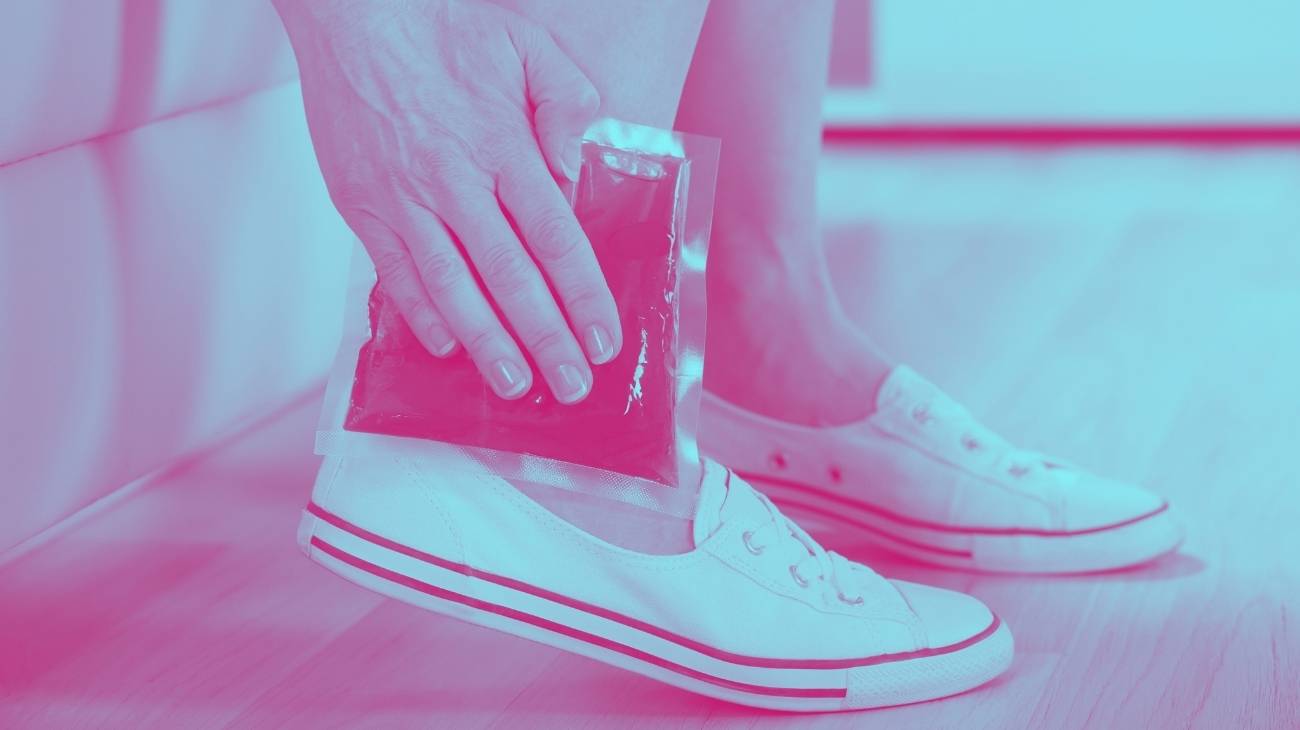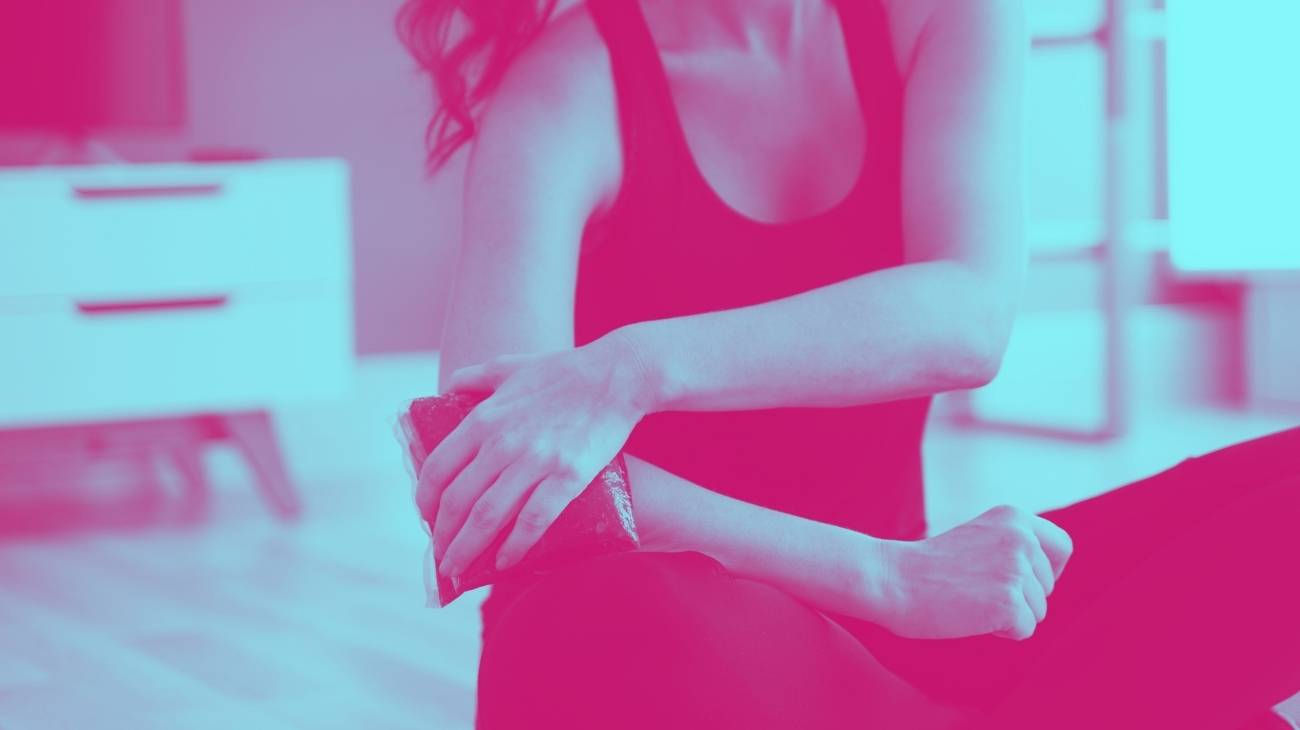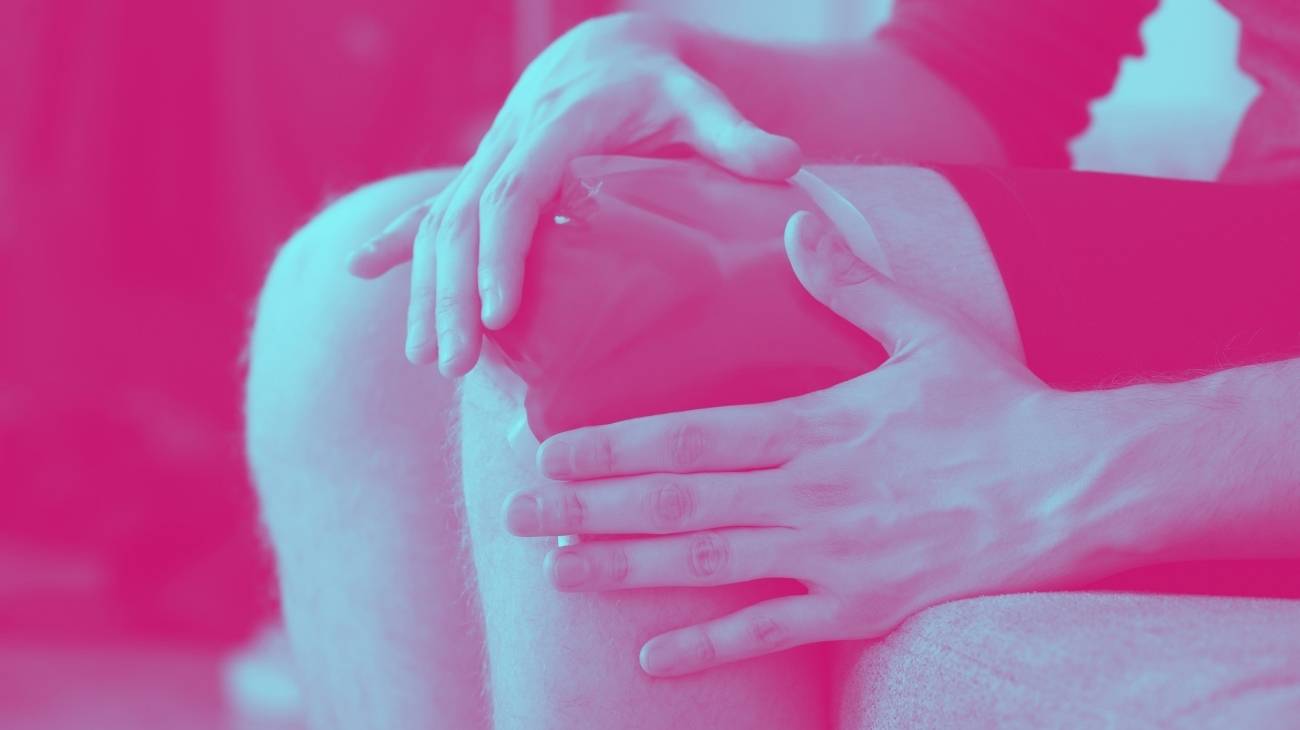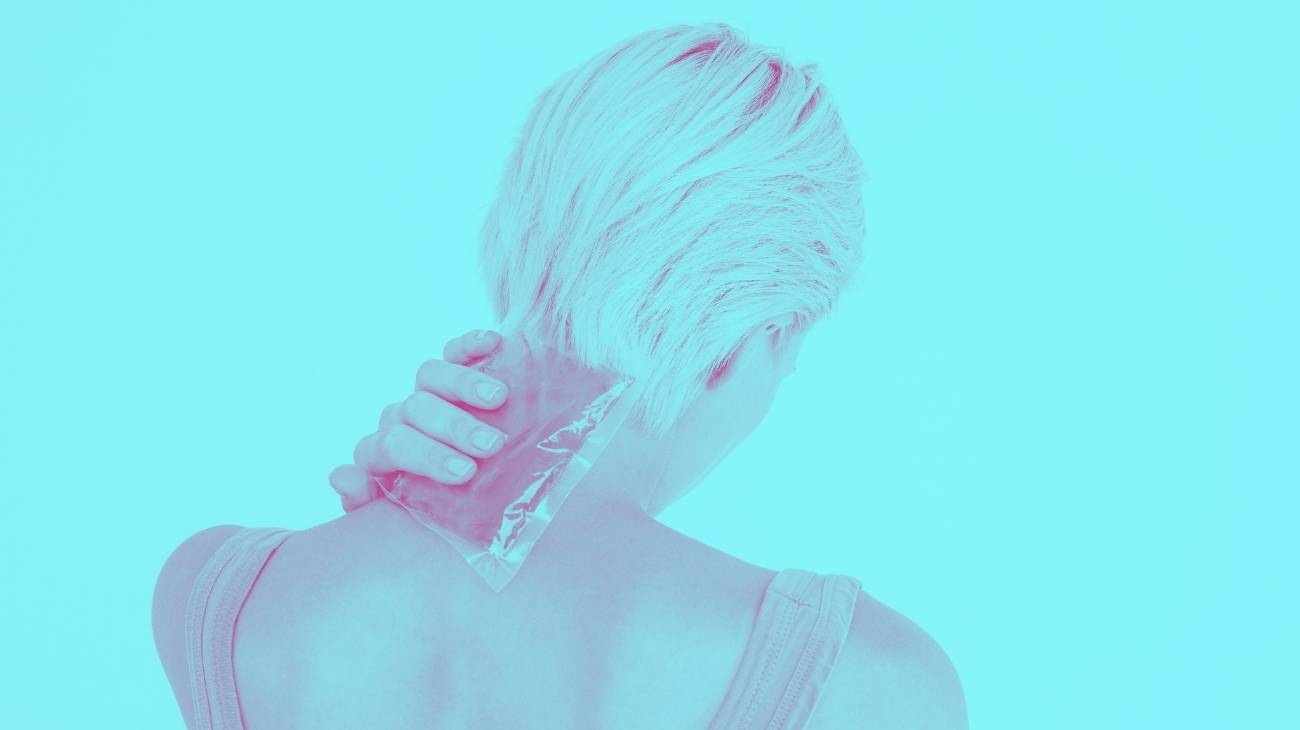- What is the best ice gel pack for sprain and strain?
- Video: How to use hot and cold gel packs?
- Types of hot & cold packs you should know about
- What are the causes of muscle sprain?
- What is better for relieving muscle pain from sprains or strains: cold or heat?
- How do you use hot & cold gel packs to relieve sprains and muscle strains?
- The best hot and cold gel packs for pain relief
Sprains andpulled muscles are among the most common musculoskeletal injuries. Although they are usually very painful and uncomfortable, they are not very serious and dangerous injuries.
The use ofhot and cold gel packs to relieve sprains and muscle strains is often the easiest and most comfortable method. It is very effective when done correctly, and the best part is that it has no side effects. If you would like to know more about this therapy, come and see us.
What is the best ice gel pack for sprain and strain?
- Size: One size fits all
- Colours: Grey and Black
- Material: Breathable
- No. of products: 1 Piece
- Uses: Rehabilitation and sport
- Always Flexible
- High Quality
- Full Pack
- Extra-Strong Velcro
- Ergonomic design
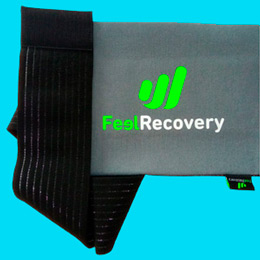
Extra-Strong Velcro
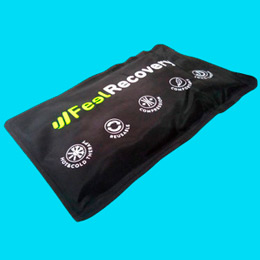
High Quality
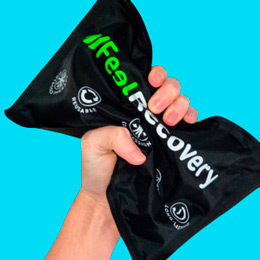
Always Flexible
- Adjustable strap
- Protective cover
- Hot/cold therapy
- Quality materials
- Only one per order
- Only one size
It is lined with a soft fabric that prevents slippage and maintains comfort. It also has an adjustable, perforated strap made of synthetic material, which can cause irritation to the front of the knee. It is ideal for relieving pain from muscle tears and inflammation of patellar ligaments, thanks to the combination of complementary treatments that are applied naturally.
World-Bio - Reusable Ice Pack for Knee Swelling, Sports Injury, Bursitis, Arthritis and Joint Pain
- Adjustable strap
- Hot/cold therapy
- Only one unit per order
It is also suitable for people with arthritis who suffer from cartilage wear, it is only necessary to use the microwave and freezer to achieve the temperature indicated for the treatment. It is made with soft, strong seams that help keep the medical grade gel in place. Keep in mind that in some cases the liquid inside may leak out after some time.
- Material: Nylon
- Uses: Knee, Back and Neck
- Type of adjustment: Velcro strap
- Cover: Yes
- No. of units: 1
- Adjustable strap
- Suitable for various body areas
- Quality materials
- Adjustable compression
- Cold therapy only
- One size only
The cold therapy can be applied easily, you only need to place the band in the refrigerator for about 3 hours until the necessary temperature is reached to oxygenate the muscle and tendon fibres. You also have the option of applying the thermotherapy in just one minute in the microwave. The padding is reusable and can last for a long time, but be aware that further heating can cause burns and skin irritation.
- 3 Gel Packs
- Adjustable compression with quality finish
- One size fits all
This kneecap support has 4 adjustable straps strategically placed to immobilise harmful movements, which will also prevent muscle tears. You only have to remove the heating pads and place them on the inside, after getting the necessary temperature in the microwave or refrigerator. It is important to know that, in some cases, the heat does not last long and causes some discomfort.
- Adjustable Velcro strap
- Microwave safe
- Hot/cold therapy
- Quality materials
- Medium flexibility with cold therapy
- Only one per order
Its velcro fastening system will prevent slippage, without losing flexibility in movement. To apply heat, you only need to place the thermal wrap in the microwave for two minutes and, if you want to combine it with the effects of cold, you will have to freeze it for 2 hours. Please note that the material may cause irritation and the compression may be insufficient.
- Material: Nylon
- Uses: Elbow, Back, Knee, Ankle
- Type of adjustment: Velcro strap
- Cover: Yes
- No. of units: 1 Gel Pack
- Extra large pack
- Microwaveable
- Heat/cold therapy
- Adjustable Velcro strap
- Medium flexibility with cold therapy
- Bulky design
You can use this reusable gel pack to treat tennis elbow syndrome, arthritis and bursitis by simply placing it in the microwave or refrigerator to achieve the desired temperature. The support points can be modified according to your needs, as you only need to pull the protective cover to get the best results. For some users, the quality of the material and the compression caused skin irritation.
- Quality materials
- Protective cover for gel pack
- Heat/cold therapy
- Fully adjustable
- Not suitable for microwave
- Bulky design
Choose the time of application of thermotherapy and cryotherapy in each daily session. Swap the two gel sachets after heating in the microwave or cooling in the freezer for direct application to the affected area. It can be used by both men and women without any inconvenience, but keep in mind that its size is not always effective in maintaining compression in all users.
- Heat/cold therapy
- Optimal fit with adjustable pressure
- Not suitable for microwave
For faster effects, complement the cold therapy with thermotherapy by simply heating the thermal pillow in the microwave or cooling it in the fridge. Sprains, swollen feet and Achilles tendonitis will be a thing of the past when you recover with the thermal support with gel packs. In some users the gel pack is not thick enough to maintain the temperature for a long time.
Video: How to use hot and cold gel packs?
Types of hot & cold packs you should know about
What are the causes of muscle sprain?
As we mentioned earlier, these two entities are the most common musculoskeletal conditions:
Muscle contractures
A muscle contracture is nothing more than a permanent and involuntary contraction of the muscle. They are characterised by a shortening of the muscle fibres due to excessive strain. Every muscle must contract and expand in order to move properly. In contrast, when a muscle contracts, it does not relax and the area remains hardened and painful.
They occur depending on the timing of the physical exertion:
- During physical exertion: They usually occur when physical exertion is high, either due to a lack of training or due to the effort of the exercise. This is due to the body's inability to eliminate the products of muscle metabolism, resulting in pain and inflammation.
- After physical exertion: This is due to the inability of the muscle to return to its resting or relaxed state after physical exertion. After intense physical activity, a great deal of fatigue accumulates in it, which does not allow it to relax again.
- Residual contractures: These contractures occur after a muscle injury or trauma. As a defence mechanism, the muscle contracts to protect the injured area, but it tends to continue working even after the injury has healed. This persistence of the injury leads to residual muscle contracture.
We will now talk about the development and main causes of a muscle contracture:
- Overuse: This is one of the most common and highlighted causes. When sudden or continuous intensity is demanded of a muscle, it can become injured and contract. People who do not exercise frequently or do not prepare before exercising are more likely to suffer from muscle strains.
- Sudden temperature changes: When the muscle is subjected to a sudden change in temperature, it can cause an involuntary and painful contraction. It occurs much more often when the muscle is hot and exposed to extreme cold.
- Emotional stress: When an organism is exposed to a stressful situation, there is an accumulation of tension in all the muscles of the human body. This promotes the development of muscle contractures.
- Dehydration: The loss of water and electrolytes such as potassium, magnesium and glucose can lead to muscle failure. All of these elements allow the muscles to function properly, and when there is a deficit, normal metabolism is impaired, leading to contracture.
- Older age: Older people are more likely to suffer from muscle contractures because they lose elasticity and flexibility.
Sprains
Sprains are a completely different injury from muscle strains. While muscle strains occur in any muscle of the body, sprains are specifically limited to joints. Thus, sprains are defined as stretching, lengthening or tearing of the ligaments that connect joints. The most common sprain that people suffer is to the ankle.
Sprains are generally classified into three types depending on their severity:
- Grade I: This is the mildest form of sprain, where the ligaments are strained but not torn. With this grade, there is severe pain and even inflammation, but there is no restriction of movement.
- Grade II: This type of sprain is characterised by a partial tear of the ligament. In this case, the pain is much more intense and the joint is more restricted in its movement.
- Grade III: This is the most severe form, where there is a complete tear of the ligament, also with detachment of the bone. There may also be dislocation, which further compromises the integrity of the joint. In this case, there is immobility of the joint, extremely severe pain and surgical resolution.
The main reasons for sprains are:
- Sprain: Sprains are much more common on the lower limbs, especially the ankle. It occurs when the foot loses its stability while walking or running on an uneven surface.
- Certain sporting activities: Sharp twists or overloading a limb during sporting activities can cause sprains. They are common in knee, hand and thumb sprains.
- Trauma or fall: A blow to a limb can cause a sprain, as can a fall. Wrists are often injured by falls and handstands.
- Muscle fatigue: exhausted muscles are less able to support the joints well.
- Inadequate equipment: Sports equipment that is in poor condition can lead to injuries such as sprains. This is often the case with shoes that do not fit the foot because they are too big or too small.
What is better for relieving muscle pain from sprains or strains: cold or heat?
Heat and cold therapies are one of the quickest and easiest ways to relieve the pain of muscle sprains or strains. Whether one or the other is used depends on whether the injury is acute or delayed. It is easiest to use hot or cold gel packs. It is important to know the benefits of each in order to prioritise their use:
Benefits of cold therapy
Cold therapy or cryotherapy is very helpful for inflammatory processes, especially when they are acute. Its effectiveness lies in its application within 48 to 72 hours after the muscle strain or sprain.
The inflammation is caused by dead and damaged cells, which trigger the invasion of repair cells, causing further inflammation. Cold also reduces the permeability of the capillaries, which prevents the extravasation of fluid into the interstitial tissue, thus preventing oedema.
The benefits of cold include:
- Reduced blood flow: Reduced blood flow due to vasoconstriction leads to less swelling and oedema.
- Disruption of pain transmission: Cold inactivates pain receptors in peripheral nerves, resulting in an analgesic response. Local application of cold causes itching for the first few seconds, then pain and finally pain relief.
- It promotes tissue regeneration: the resting phase allows the tissue to recover gradually and with a better response. The cold prevents haematomas and damage to the adjacent tissue, so that a significant improvement can be observed in a short time.
Benefits of heat therapy
Heat is also very effective in delaying musculoskeletal pain and inflammatory processes. Heat should never be applied to a wound that has just developed, as heat causes increased vasodilation. This leads to increased blood flow, which can aggravate an acute inflammatory process.
If an injury is more than 3-4 days old and pain persists, it will respond better to local heat. Vascular dilation allows for better blood flow, which allows more oxygen and nutrients to reach the damaged muscles and tissues. When the blood supply is better, repair cells can migrate and promote tissue healing.
When damaged ligaments and muscles improve significantly, pain is also greatly reduced. Some of the benefits of heat can be summarised as follows:
- It promotes healing and tissue regeneration: the increased blood flow allows better nutrition and oxygenation of the cells and tissues, which promotes muscle and ligament recovery.
- Increases elasticity and flexibility: the heat recovers the tissues and allows better relaxation of the ligaments and muscles, resulting in greater elasticity and flexibility.
- Reduces joint stiffness: This is due to its relaxing properties on ligaments and muscles.
- Pain relief: Heat also relieves pain by acting on the pain receptors of the peripheral nerves.
How do you use hot & cold gel packs to relieve sprains and muscle strains?
There are two ways to use them safely. They can be chilled in the freezer or refrigerator and heated in the microwave or in a water bath. The following explains how to use them properly at both temperatures:
Cold
Refrigerating the bags is very easy if you follow the recommendations below:
- Keep the gel pack in the refrigerator or freezer for at least 2 hours.
- Take the gel pack out of the freezer and check that it is at the correct temperature.
- Start applying to the wound area. With our packs, there is no need to place protective covers or cloths on the wound. They can be used directly as they have a soft binding on one side.
- Perform cold exposures for 10-15 minutes every hour. This should be repeated for 48 to 72 hours after the injury.
- Do not exceed the application time of the gel packs to avoid cold burns or skin damage.
- It is important to observe the site of the cold and watch for changes in skin colour.
- It is recommended to combine the therapy with periods of rest during which the affected area is elevated.
- Put the gel pack back in the freezer for later use.
Hot
If you have chosen to use the microwave, follow these recommendations for a safe process:
- Cook in the microwave at 800 W for 30 seconds.
- Check the heating process by monitoring the temperature by touch. The bag should be massaged so that the temperature is properly distributed in the pack.
- If the pouch is not at the right temperature, it can be heated for another 10 seconds.
- If the pouch gets too hot, leave it at room temperature and then heat it again.
- Once the temperature is perfect, you can start applying it to the area to be treated for 15 to 20 minutes every hour. This process can be repeated for as long as necessary.
- Check if the surface of the gel pack expands in the microwave. This just means that it has been overheated and you should let it cool down and then reheat it.
- If the bag breaks, let it cool and then discard it.
- Never heat a gel pack in the oven or on the grill.

